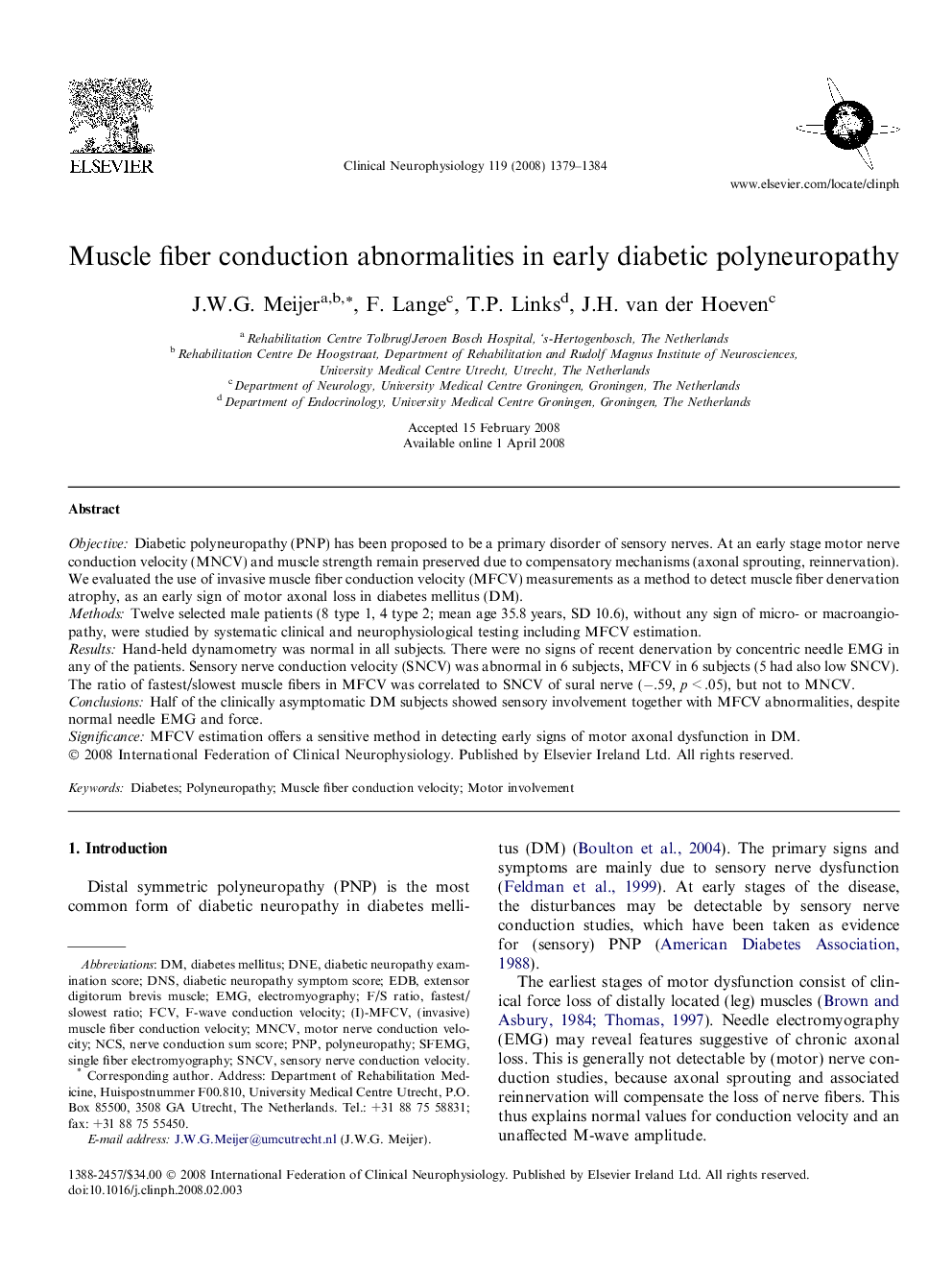| Article ID | Journal | Published Year | Pages | File Type |
|---|---|---|---|---|
| 3047458 | Clinical Neurophysiology | 2008 | 6 Pages |
ObjectiveDiabetic polyneuropathy (PNP) has been proposed to be a primary disorder of sensory nerves. At an early stage motor nerve conduction velocity (MNCV) and muscle strength remain preserved due to compensatory mechanisms (axonal sprouting, reinnervation). We evaluated the use of invasive muscle fiber conduction velocity (MFCV) measurements as a method to detect muscle fiber denervation atrophy, as an early sign of motor axonal loss in diabetes mellitus (DM).MethodsTwelve selected male patients (8 type 1, 4 type 2; mean age 35.8 years, SD 10.6), without any sign of micro- or macroangiopathy, were studied by systematic clinical and neurophysiological testing including MFCV estimation.ResultsHand-held dynamometry was normal in all subjects. There were no signs of recent denervation by concentric needle EMG in any of the patients. Sensory nerve conduction velocity (SNCV) was abnormal in 6 subjects, MFCV in 6 subjects (5 had also low SNCV). The ratio of fastest/slowest muscle fibers in MFCV was correlated to SNCV of sural nerve (−.59, p < .05), but not to MNCV.ConclusionsHalf of the clinically asymptomatic DM subjects showed sensory involvement together with MFCV abnormalities, despite normal needle EMG and force.SignificanceMFCV estimation offers a sensitive method in detecting early signs of motor axonal dysfunction in DM.
